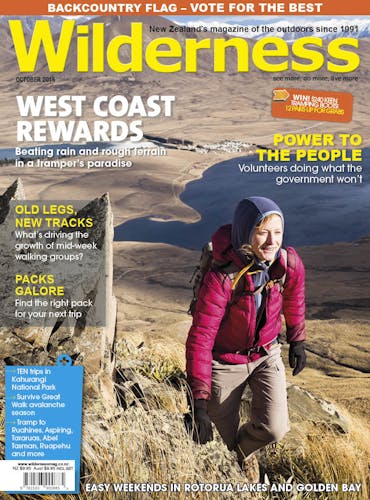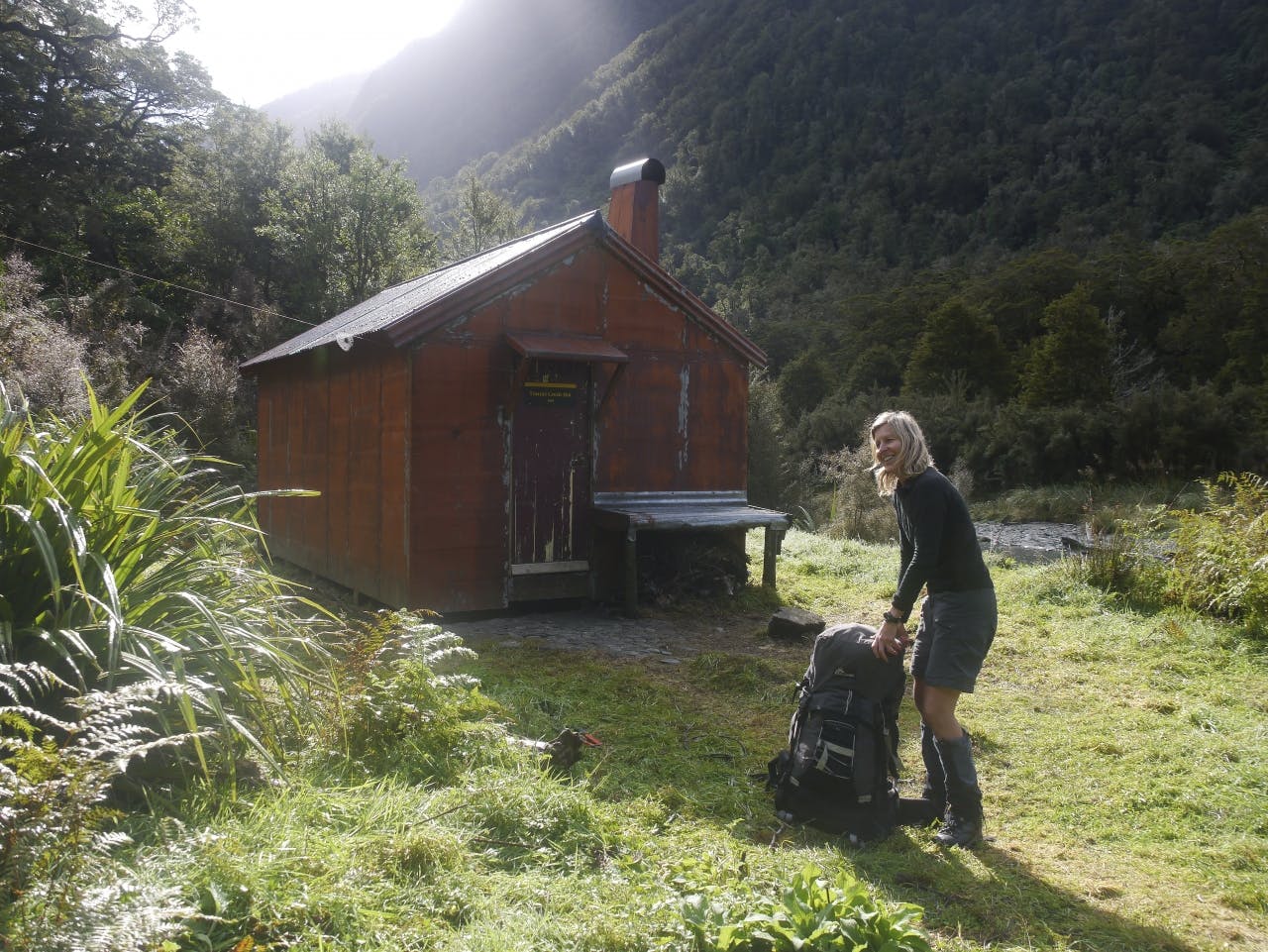Geoff Spearpoint takes the bull by the horns and adopts a backcountry hut
‘This hut needed a paint job years ago,’ I thought as I struggled with the door handle. The knob was so knackered I had a job turning it. I pushed the weathered door open and looked around. It was time to get to work.
Arriving at Tunnel Creek Hut in South Westland for the first time since taking over maintenance for it from DOC, I was full of eager anticipation and excitement. There was no more uncertainty. It was in my hands and I knew that over the next year or so, with the help of friends, I’d restore the hut to give welcoming shelter for decades to come. Originally built by the forest service in 1965, the six-bunk hut, located in the Paringa Valley, turns 50 next year and I plan to be there, celebrating its bright future.
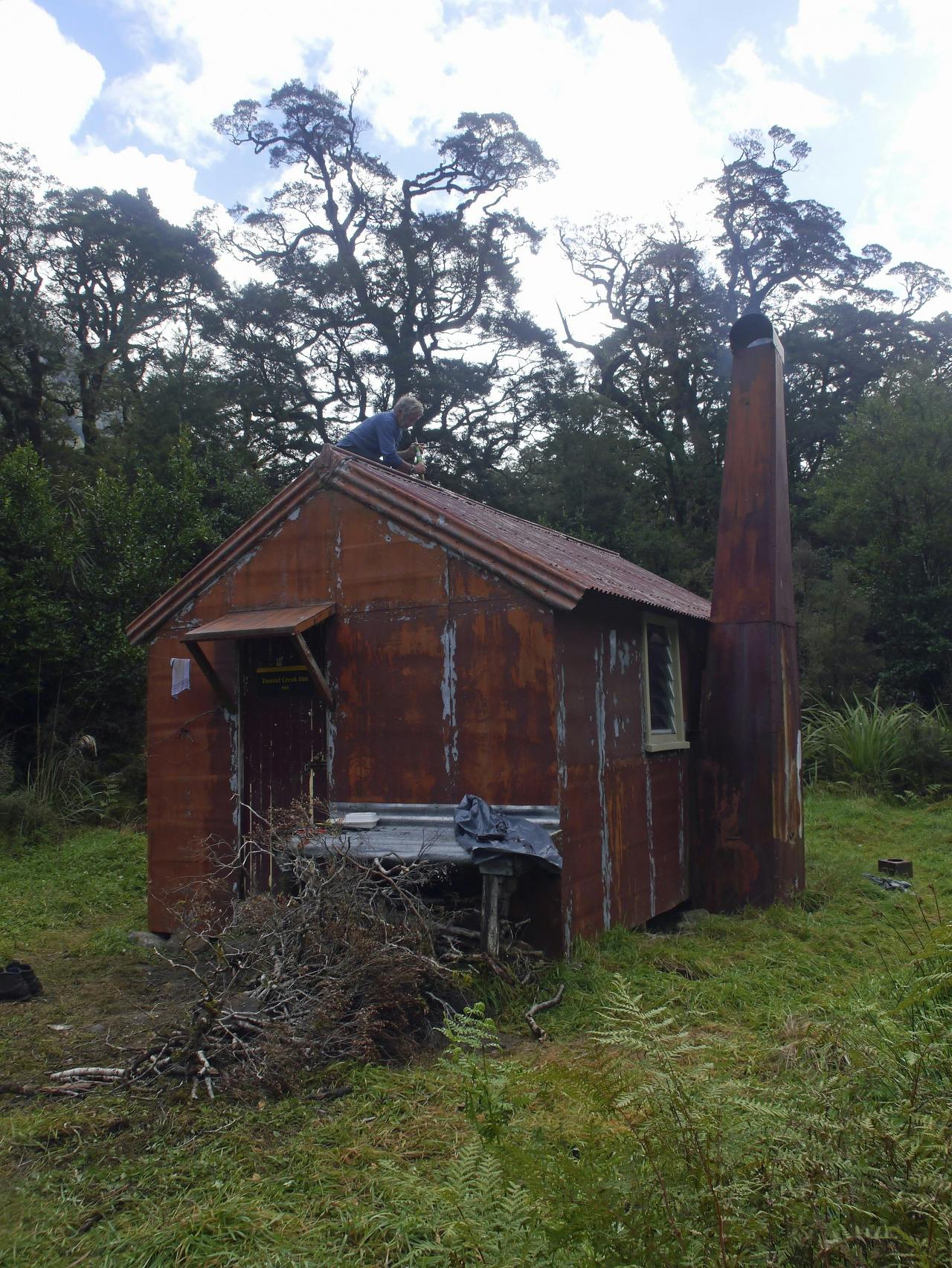 I’d chosen to take on Tunnel Creek for a number of reasons. For trampers and climbers, the hut is a fairly easy day’s walk from the road and offers a couple of approaches to Mt Hooker and Marks Flat, as well as other trips into the Clarke and Moeraki valleys. But at the same time, it’s a hut with a wonderful isolated ambience I find very appealing. I especially like the open fire (just remember to open a side window to make sure the smoke draws up the chimney). My first trip to the hut was in 1996, at the end of a trip to Marks Flat and a climb of Mt Hooker. I was captivated by both the rock bivvy found at the bushline and this classic hut, surrounded by a spacious amphitheatre of forest and tops, nestled on a grass fringe in the head of the valley. I’ve been back several times since.
I’d chosen to take on Tunnel Creek for a number of reasons. For trampers and climbers, the hut is a fairly easy day’s walk from the road and offers a couple of approaches to Mt Hooker and Marks Flat, as well as other trips into the Clarke and Moeraki valleys. But at the same time, it’s a hut with a wonderful isolated ambience I find very appealing. I especially like the open fire (just remember to open a side window to make sure the smoke draws up the chimney). My first trip to the hut was in 1996, at the end of a trip to Marks Flat and a climb of Mt Hooker. I was captivated by both the rock bivvy found at the bushline and this classic hut, surrounded by a spacious amphitheatre of forest and tops, nestled on a grass fringe in the head of the valley. I’ve been back several times since.
If you have a favourite backcountry hut that hasn’t received any maintenance for years; a hut in a special place with great memories that you want to see looked after for future generations but have become frustrated that no-one seems to care, then this story is for you. New winds are blowing.
In March this year, I sat down with two of DOC’s West Coast staff in Franz Josef to discuss taking over management of Tunnel Creek. Wayne Costello, the conservation services manager, and Ian Singleton, the region’s senior ranger, seemed delighted at the prospect. I had previously been posted a ‘Community Management Agreement’ for Tunnel Creek Hut to sign.
The wording of the agreement seemed daunting at first. I looked at the contract and words most sensible people run a mile from jumped out at me: ‘…must comply’, ‘…Standard Operating Procedures and Departmental Codes of Practice’, ‘… Health and Safety in Employment Act 1992 and its regulations’, ‘…Conservation Act 1987’.
I thought of the resources I’d need, how I would find the money and the right people to help. Then I thought about the last decade’s maintenance at Tunnel Creek, where a new toilet and a couple of warning signs are about all there was to show for exacting national hut standards and I relaxed a little, realising it wouldn’t be that hard to improve upon. And besides, the ex-Forest Service two, four, and six bunk huts were well built by tradesmen and are ideal huts to take on as a project.
I shut my eyes and signed.
When I opened them, Wayne and Ian were all smiles. They shook my hand and quickly offered support to get me started.
About 18 months previously I had taken a good look around the hut, so I knew what to expect. Maintaining the track up the Paringa Valley to the hut and beyond to the rock bivvy at the bushline was such a priority for me that I had specifically requested this work be included in the agreement.
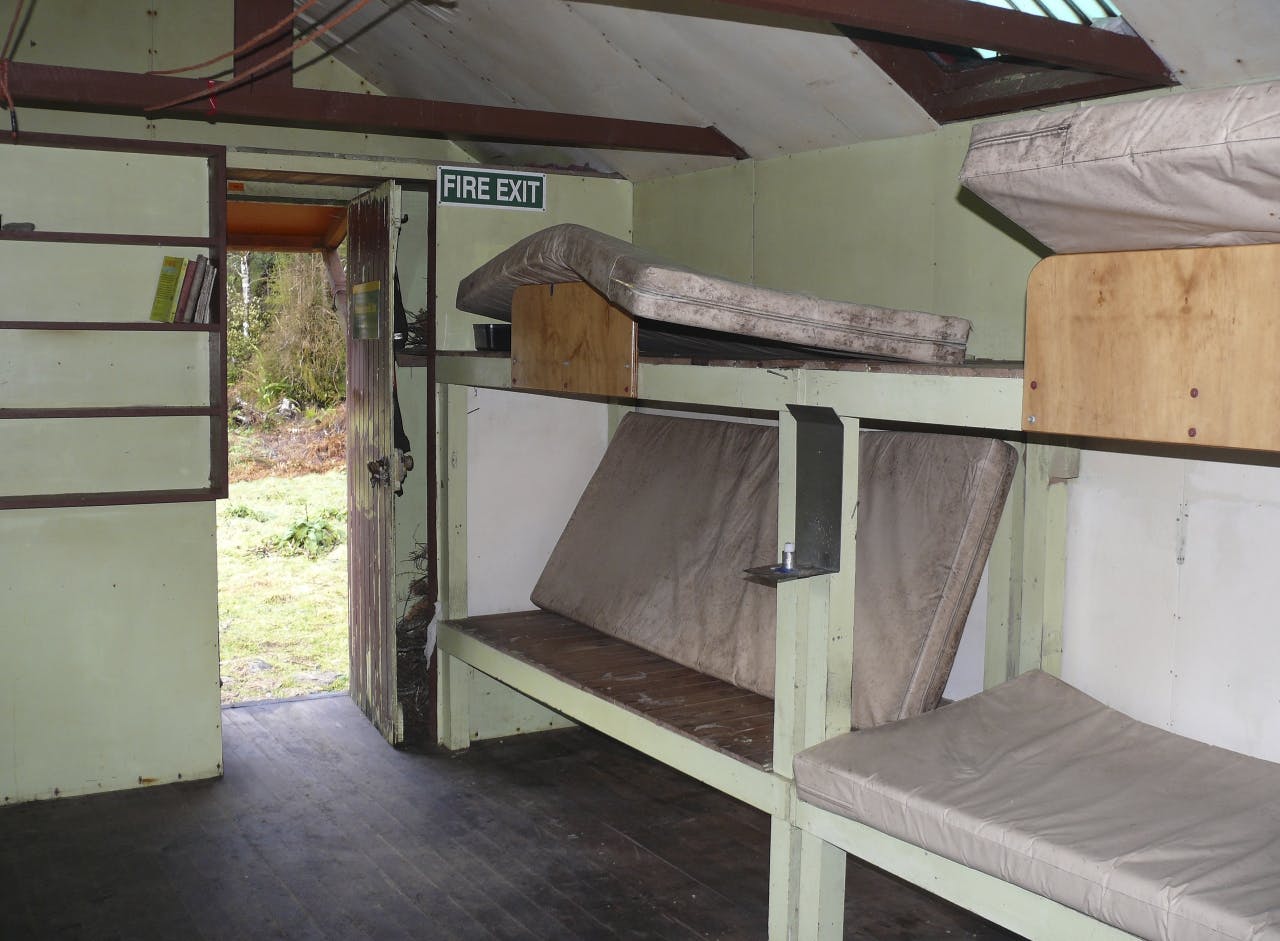
I had decided to take over management on my own because I didn’t want to be tied to any club or group. Though that put the onus on me, it meant I could choose how I went about things. It seemed to me there was a simple checklist to work through: make the hut weatherproof and dry, structurally sound, replace broken floorboards, make it vermin proof, clear away damp vegetation, then clean and paint it inside and out.
Voila! It will be sorted for years.
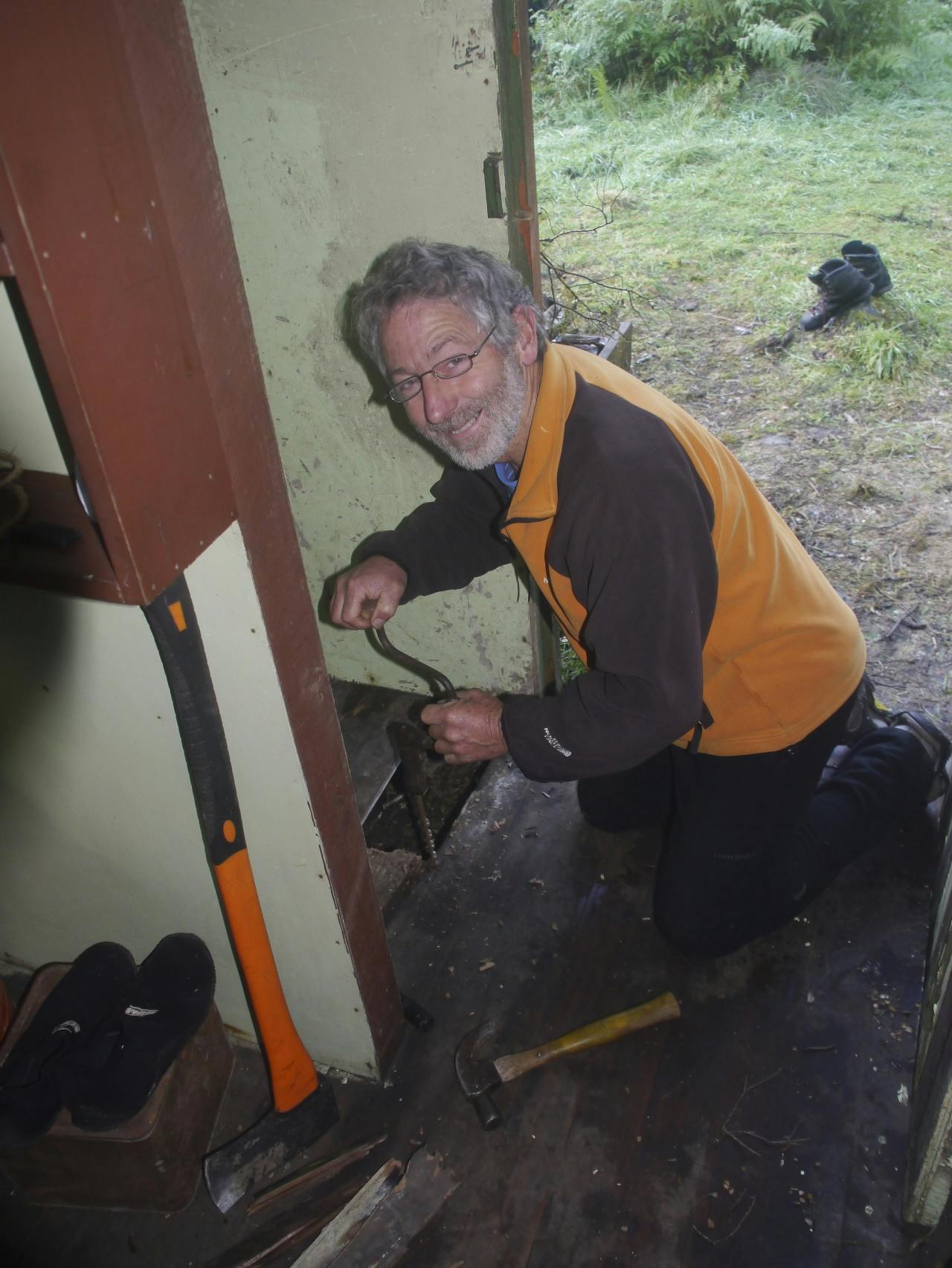 Since signing that contract in March, hut maintenance has taken me on a different kind of journey in the hills. Supportive allies came out of the woodwork. Ben Monk, who farms the lower Paringa, knew of the hut’s decline and offered to help with roofing iron. Helicopter pilots, too, often have strong personal connections with isolated huts sometimes going back many years to their ground hunting days. They too want huts to stay for others to enjoy, whether people are on foot or being flown in for hunting.
Since signing that contract in March, hut maintenance has taken me on a different kind of journey in the hills. Supportive allies came out of the woodwork. Ben Monk, who farms the lower Paringa, knew of the hut’s decline and offered to help with roofing iron. Helicopter pilots, too, often have strong personal connections with isolated huts sometimes going back many years to their ground hunting days. They too want huts to stay for others to enjoy, whether people are on foot or being flown in for hunting.
On my first maintenance trip to the hut, I needed to take tools and materials. The deer hunting ‘roar’ was on, so I rang pilot James Scott in South Westland and explained the situation, hoping for a cheap back flight.
“I’m picking some guys up at Tunnel Creek Hut tomorrow,” Scott said. “If you’re at the Paringa Bridge, I’ll fly you in when I go to collect them.”
I’d never talked to Scott before, but it was clear from the outset he was keen to see Tunnel Creek Hut looked after and would do what he could to help.
On that trip, my companion Liz Stephenson and I applied silicone sealant, roofing screws and paint on the rusty patches, to make the hut weatherproof again.
Several floorboards were broken or rotten. One of them had a temporary patch ingeniously made from a flattened anchor milk powder tin that had been there so long it had rusted out. I hadn’t brought in any flooring timber, but then Liz pointed out the materials were on hand: the shelves in an old cupboard were tanalised rimu tongue and groove floorboards. I was able to replace several strips of flooring with these, which largely took care of the next problem – vermin proofing. (Tip: If you’re fitting tongue and groove between existing boards, take out the lower ridge on the double ridged side, then tuck the other side in before dropping the board neatly into place.)
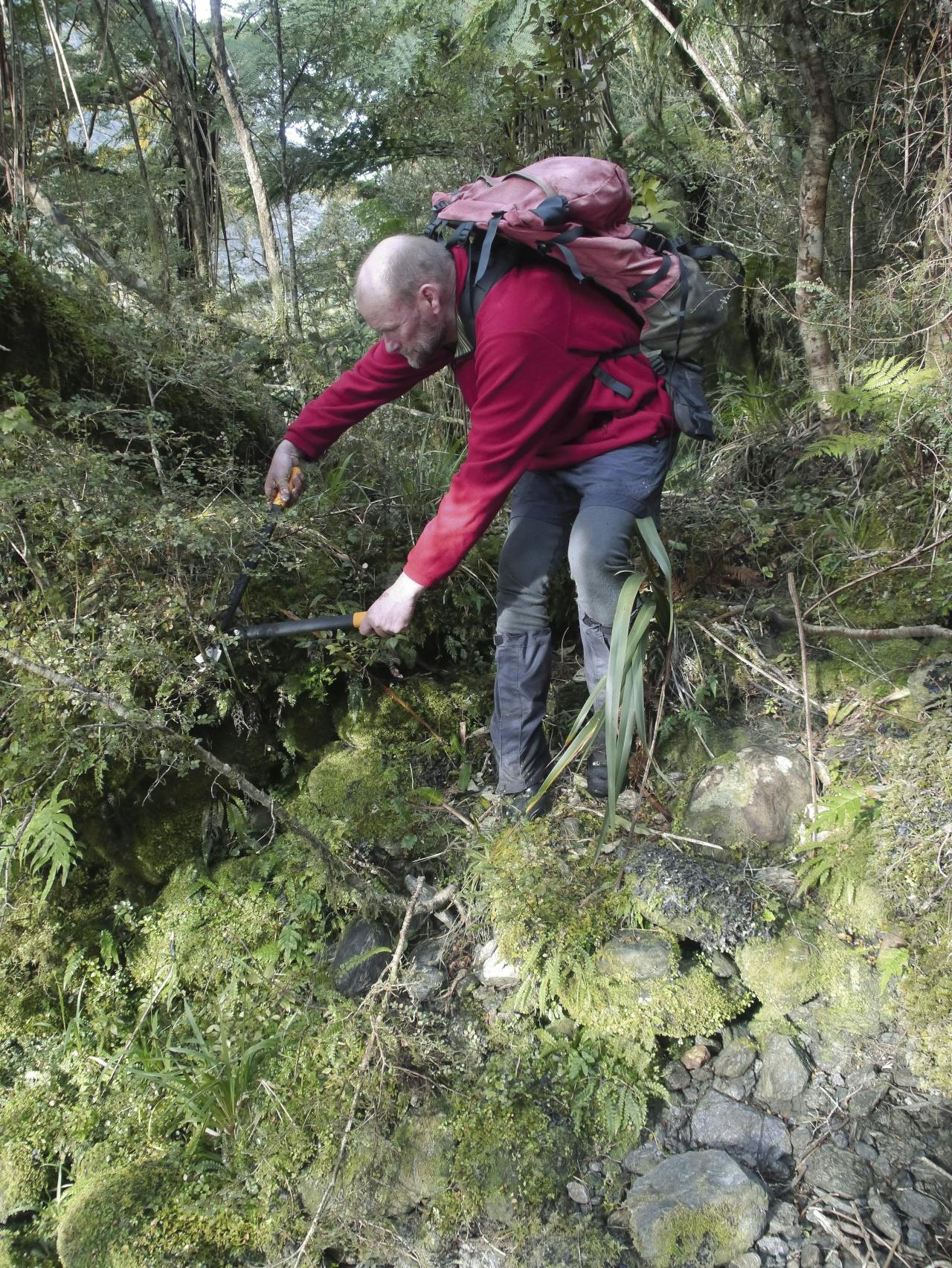 Looking back, it is hard to appreciate just how dirty the mattresses were when we arrived. Liz spent days scrubbing them, and then did the walls inside as well. I doubt the windows had been touched for years, but now you can look through them to the craggy bluffs on the horizon. The sitting bench was wobbly, but that was an easy fix.
Looking back, it is hard to appreciate just how dirty the mattresses were when we arrived. Liz spent days scrubbing them, and then did the walls inside as well. I doubt the windows had been touched for years, but now you can look through them to the craggy bluffs on the horizon. The sitting bench was wobbly, but that was an easy fix.
We cleared the track leading to the toilet and gravelled around the hut door.
Some ply lining on the ceiling has been wet and delaminated. That will need replacing at some point. And one of the windowsills is rotten, but I’ve found a replacement in Musgroves recycling yard in Christchurch.
On my second trip, Andrew Buglass, Hugh van Noorden and I spent five days re-cutting and marking the track up to the hut from Stew Creek. I also replaced the door handles.
It will take several more work parties before the hut is up to scratch again, but I have its measure and look forward to it.
I’m not alone in this. At the moment there are about 40 huts maintained by clubs and other volunteers under agreements with DOC, some extending back many years. If you are at one of the many older, less frequented huts, don’t underestimate the difference you can make by spending some spare time doing simple repair jobs, clearing vegetation from around the walls, or weatherproofing. It’s a lot more useful than an entry in the logbook pointing out what needs to be done.
Most importantly, Tunnel Creek Hut remains an open public hut and all are welcome to spend a night – or to help me fix the floorboards. In the end, with a bit of skill, care and competence, and a sense of community mindedness, backcountry trampers can help maintain small huts and be the richer for it.
Who Can?
Maintaining a backcountry hut is an ideal project for a competent home handyperson, or just an enthusiast keen to see a hut restored and looked after. You don’t have to be a builder but if there are weatherproofing or structural issues to fix you will need, on the odd occasion, someone in your group who does have those skills and who can do a professional job. But don’t get too hung up on it – let’s not forget it was professionals backed by council inspectors who created the leaky homes scandal. With advice sourced from the Internet, and a good dose of common sense, you will do better than that.
How?
Make sure your hut is one of the 110 on DOC’s ‘minimal maintain’ list. Then, visit your chosen hut. Take a notebook and tape measure and go over the hut with a fine-toothed comb, noting everything that needs doing – and that doesn’t. Leaks, piles, floors, walls, roof, door latches, structural integrity, water supply, fire, toilet – write it all down, measure and photograph everything. List the tools and material you might need for your first work party.
Next, have a chat with DOC’s local conservation services manager. They will be keen to hear from you and eager to support, but their current knowledge of the hut may be hazy. To formally take over maintenance, you will need to sign a ‘maintain by community’ contract. DOC will talk you through the legalese, but don’t be put off. If you work with integrity and care and maintain or improve the hut’s current standard, then there is no reason for a problem on either side.
Costs
Money is needed to do all this work, but not as much as you might think. And there are various sources for it.
Local DOC staff may be able to assist with helicopter backloads when doing other work locally, or even help with some materials like paint donated by Dulux.
DOC has also set up a Community Conservation Partnership Fund of $700,000 dedicated to volunteer hut and track maintenance projects. A consortium of Federated Mountain Clubs, the New Zealand Deerstalkers Association, and Trail Fund are working directly with DOC to manage this. Application forms can be sought from these groups for funding.
Huts often have lots of friends keen to support maintenance, so crowdsourcing is also a viable option. The online Permolat group (www.remotehuts.co.nz), whose members maintain huts and tracks in Westland, have a fund for maintenance set up under a trust.
But do expect to fork out some of your own cash, even if it is just to pay for travel and food.
Keep track of your spending – most funders will want to see a receipt for claims.
Benefits
Many of these huts will give grateful trampers, hunters and others another 50 years of cosy shelter. That has a flow-on effect, making it more likely local tracks and bridges remain in place.
For the volunteer, there’s the pleasure of knowing they had the vision to step in and look after the hut at a crucial time in its life. It’s a very satisfying way to give something back, and way less effort than writing submissions opposing plans to remove a hut – just reclaim them, after all, they belong to all New Zealanders. Think of it as your public bach or crib, open to all.
Restoration also means the hut can be used for environmental work. Each evening at Tunnel Creek Hut there were a couple of blue ducks on the river. A local stoat-trapping project would help them and hunters have written in the logbook that they would check traps.





